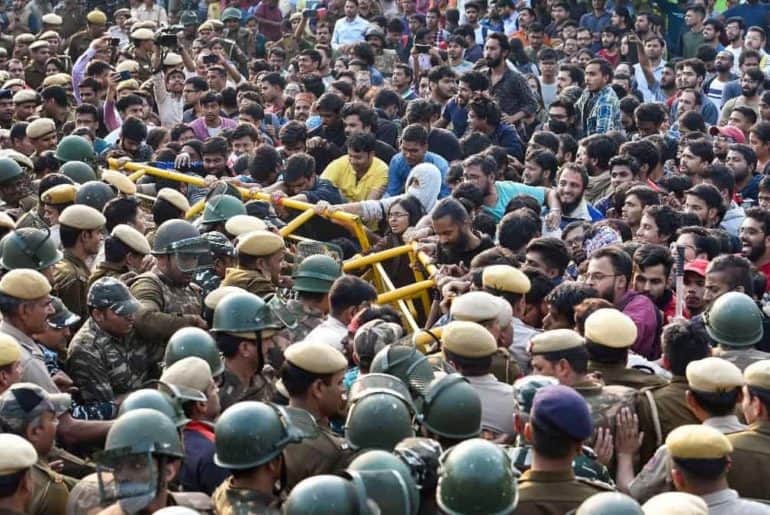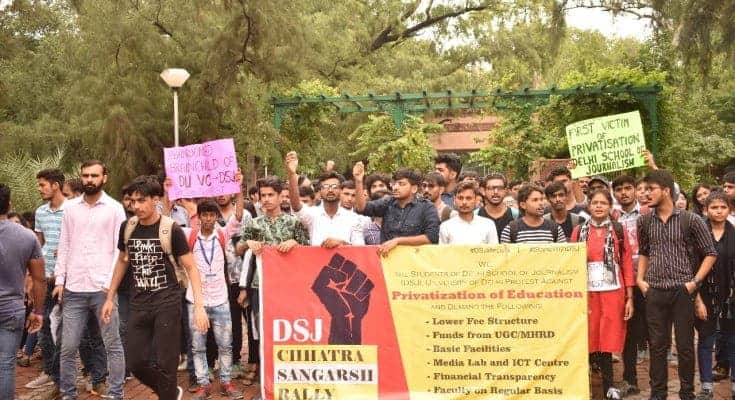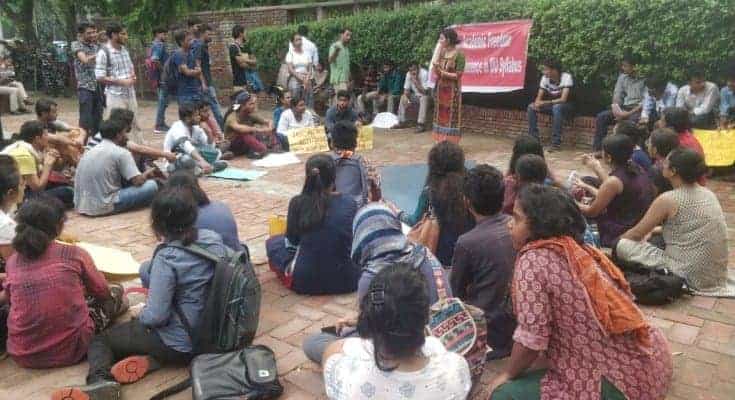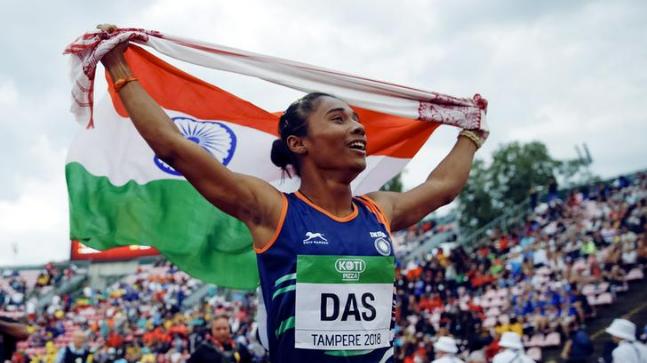A massive protest broke out in the Jawaharlal Nehru University (JNU) on Monday over fees hike during the Varsity’s convocation ceremony, leading to clashes with the police.
On 11th November 2019, thousands of students from JNU clashed with the Delhi police after the protests over drastic fee hike escalated. The students were demanding the withdrawal of the draft hostel manual, which they claimed has provisions for fee hike, dress code, and curfew timings. They were planning to protest outside the All India Council of Technical Education (AICTE) premises where the varsity’s third convocation that was being addressed by Vice President M. Venkaiah Naidu was held. While Naidu left the venue after attending the convocation, the Minister of Human Resource Development (HRD), Ramesh Pokhriyal ‘Nishank’ was stuck due to the protest for over six hours.
The students were demanding the withdrawal of the draft hostel manual, in which service charges of INR 1,700 were introduced and the one-time mess security fee, which is refundable, has been hiked from INR 5,500 to INR 12,000. The rent for a single-seater room has been increased from INR 20 per month to 600 per month, while rent for a double-seater room has been increased to INR 300 per month from INR 1,000 per month. The draft hostel manual also has provisions for dress code and curfew timings, the Students’ Union alleged, even as the administration denied these two claims.
Over 600 police personnel were deployed to handle the protest organised by the Jawaharlal Nehru University Students’ Union (JNUSU). Several blockades put up by the police were also broken by the protesting students, who started their march towards the AICTE around 11.30 a.m. Barricades were placed around the JNU Campus, as well as on the route between the AICTE auditorium and the University at Baba Balaknath Marg and nearby areas. As the protest escalated, students clashed with the Delhi police, leading to skirmishes. Water cannons were used to disperse the protestors and police claimed that students were detained. This intensified the protest, with the students shouting against the Delhi Police, as well as the Vice-Chancellor (VC).
As reported by the Times of India, the JNUSU office-bearers later met the HRD Minister who assured them that their demands would be looked into. But the VC still hasn’t met with the union. “The VC is destroying the varsity. We have made several attempts to meet him on campus, but there has been no fruitful result,” Aishe Ghosh, president of JNUSU.
The students claim that the decision to hike fees by 300 percent is exclusive of students from marginalised communities. The protest is also against other actions of the varsity, like restrictions by the administration on entry to the Parthasarathy Rocks – a hillock inside the campus, or attempts to lock Students’ Union office.
DU Beat spoke with a foreign student from JNU agitated against the administration who threw light on the condition of foreign students. The student revealed that the Science students of the Foreign Nationality category pay up to 1500$ which counts nearly INR 1 lakh per semester. The Arts students of the Foreign Nationality pay up to 1200$ per semester, which equates around INR 87,000. “Just because we are “foreign” category doesn’t mean everyone comes from well to-do families. Around 40 Tibetan students’ who passed the entrance exam, could not afford the fees. They couldn’t join. JNU has a good population of SAARC country students. The fee is particularly neck breaking for South Asian students who come from third world countries,” they said.
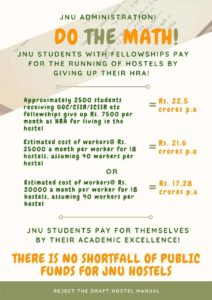
Image Credits: Unknown

Image Credits: Unknown
In these circumstance students’ raise pertinent questions like-“How is this affordable? And how does this hold to any foundational values of JNU?” while the responses remain bleak.
Around 15 to 20 students who were graduating were sitting inside the auditorium main gate in solidarity with the protestors. The JNUSU has said the strike would not end until the hostel manual is withdrawn.
Feature Image Credits: India Today
Shreya Juyal

